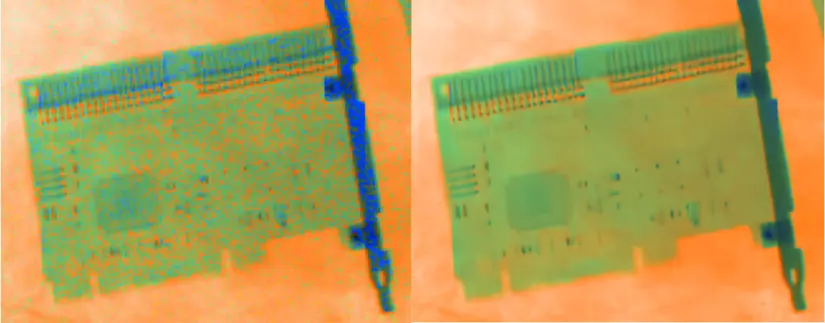A highly effective route to outstanding image quality
In security screening, image quality is pivotal to effective analysis and interpretation – a key factor in helping operators identify potential threats quickly and accurately. The level of resolution which can be generated by individual scanners is finite and has generally been restricted by cost and physical parameters – until the development of Super Resolution which uses comparatively inexpensive image processing algorithms to produce higher resolution images from lower resolution images. Super Resolution algorithms increase the resolution (or pixel count) by interpolating new data based on neighbouring pixels – also known as upsampling.
Smiths Detection has been collaborating with the national University of Singapore on a project to elevate the quality of images generated by conventional X-ray scanners using deep learning techniques to achieve Super Resolution – with great results.
Deep learning from vast datasets
A subset of machine learning, deep learning imitates the way the human brain processes data and teaches by example and repetition. Smiths Detection has already successfully employed this approach to develop our iCMORE object recognition algorithms for detecting a growing list of items such as handguns, knives and lithium batteries.
Vast datasets are needed to train the Super Resolution algorithms. An insightful approach to building its datasets enables Smiths Detection to teach the AI what is an acceptable high resolution image when derived from the lower resolution image generated by the scanner.
As AI and deep learning algorithms continue to evolve, there will be excellent opportunities to leverage the benefits of Super Resolution in security imaging.
Taking image quality to new levels
The very positive outcomes from the University of Singapore co-operation suggest that the detail and clarity of screening images can be substantially improved using Super Resolution techniques.
We have found that Super Resolution is exceptionally effective when used in combination with the company’s latest, patent pending detector design. This advanced detector delivers more data on the screened item which is converted via an algorithm into a superior image. Add Super Resolution and the result is remarkable. This would provide invaluable support for analysts in the image evaluation process.
Initially, the aim is to understand how super resolution could improve the image quality of conventional single or dual-view X-ray systems . Ultimately, Smiths Detection will also be examining the potential for applying Super Resolution to automatic detection systems and the 3D imaging produced by CT screening technology.
For more news and developments on this exciting technology, watch this space!

